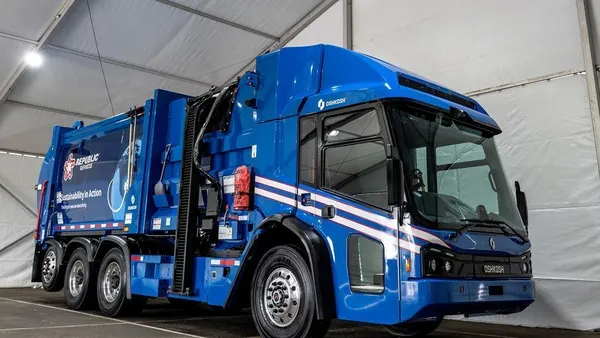Dive Brief:
- Average blended commodity prices at MRFs in the Northeastern United States were nearly 40% higher in Q2 compared with the same period a year ago, according to a report from the Northeast Recycling Council.
- The average value per ton for residential blended recyclables was $117.84 a ton, up 37.6% year over year, according to the report. When factoring in costs to dispose of residuals, that price was $108.83, up 41.4%.
- The MRF values report, which includes data across 11 states, also showed a slight increase in the average commodity price compared with Q1. The average value increased by 5% from the previous quarter, or 6% when factoring in the cost of managing residuals.
Dive Insight:
NERC’s MRF Values Survey Report, which has been published for the last five years, aims to reflect a regional look at price trends compared with the broader U.S. It’s also part of NERC’s ongoing work to promote and boost recycled commodity supply and demand in the Northeast, particularly as disposal capacity is tighter than some other areas of the country, said Megan Schulz-Fontes, NERC’s executive director.
The 15 MRFs included in the survey operate in locations with different types of laws and collection options, but NERC does not provide identifying details on specific companies or facility size in order to keep aggregate data anonymous. NERC is conducting outreach to get more MRFs to participate in the quarterly survey, which Schulz-Fontes said would help provide a fuller picture of commodity value trends for a broader range of MRF facilities.
The report includes results from 10 single-stream and five dual-stream or source-separated MRFs. Single-stream MRFs reported a blended value of $122.93 per ton, or $114.68 with residuals. Dual-stream or source-separated MRFs reported $108.55 a ton, or $98.40 with residuals. Values rose 11% from the previous quarter for single-stream MRFs, but fell 14% for the other MRFs.
NERC says the Q2 commodity increases can be attributed to “national and regional trends.” The trend of increased values in the report was also reflected in recent earnings calls for waste companies. That includes Casella Waste Systems, which operates mainly in the Northeast and parts of the mid-Atlantic. Executives reported Casella’s average commodity revenue per ton in Q2 was up 50% year over year, though the company pointed to collection efficiencies and MRF upgrades as contributing factors.
Four of the states included in the report have beverage container deposit laws: Maine, Massachusetts, New York and Vermont. That means MRFs reporting data in those states are likely to have less revenue from glass bottles, PET bottles and aluminum cans, according to the report.
Processing costs for Q2 were about $90 a ton, down from about $96 a ton in Q1. Throughout the previous year, those costs were between $88 and $93, according to the report, though NERC says it does not have “an opinion or explanation” for variations in the cost from quarter to quarter.
NERC is also gathering other commodity-related data for future reports, Schulz-Fontes said. That includes a forthcoming report on the “flow of glass” throughout the Northeast, she said.
“We surveyed the states and we got a lot of data from waste characterization studies as well as general recycling data,” she said. “It will also look at the states with deposit return systems and those without, and how that affects the numbers.”
This story first appeared in the Waste Dive: Recycling newsletter. Sign up for the weekly emails here.















